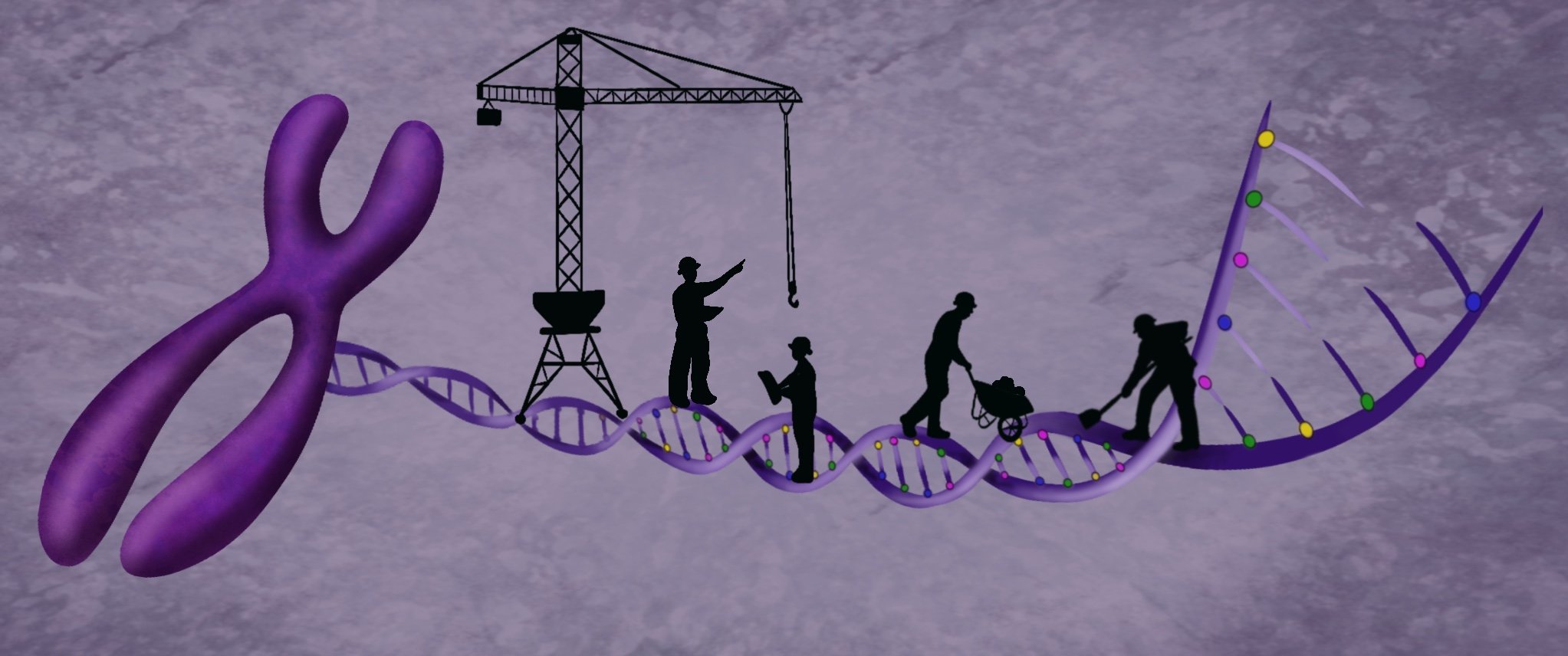Series Overview: Hi, my name is Shari and like the majority of our readers I don’t have a degree in science. What I do have is almost a decade of experience working closely with Genetic Counselors, and a passion for sharing genomic information in an approachable and easy to understand way. This passion was developed early in my career, fueled by my quickly building frustration about the over-complicated resources I found during initial attempts at self-guided learning. Genomics 101 is a blog series by GenomicMD that aims to be a solution to that frustration for others. By breaking down the complex language surrounding this field, we hope to empower people (like you!) to be more informed about how genomics can affect their healthcare journey.
Welcome back to Genomics101! In our very first blog of this series: ‘A Brief Introduction to DNA,’ we learned that genomics is essentially an umbrella term for the study of the whole genome - meaning all of the DNA and genes in an organism. However, when talking about the human genome, we more often encounter a different term: Genetics. This chapter of our Genomics101 series will investigate the definitions of both of these terms, so you can confidently understand the difference and why it matters. Let’s get started!
Before we can explain why there are two similar (but distinctly different) words used to describe this field, we need to review the basics of DNA and then define some new key terms. To quickly recap a little bit of the information shared in the first few GEN101 posts, we learned that genes are small sections of our chromosomes that contain information which provides instructions for the functions of our body. To further understand how they do this we first need to understand what sort of instructions these genes provide and to whom exactly they are provided - this is where proteins come in.
Proteins are incredibly important nutrients to our body that are made of tiny organic particles called amino acids. Most conversations about proteins center around how important they are to our diet due to their role in the building and maintaining of muscle. It is good to note that proteins also play an essential role in many other vital body functions as well. To put it simply, you can think of proteins as the tiny construction crew of the body. They receive information from our genes and then do most of the “heavy lifting” by building and maintaining the structure and movement of cells, repairing broken down processes, and even helping to create other complex things our body needs like hormones and enzymes.

Okay, so now that we know how important proteins are to the functioning of the body, and we also know that our genes tell them what to do, it would be easy to assume that most of our genes would be designed with these proteins in mind, right? Welllllll, the facts are a little less obvious than that. While it IS true that a lot of genes provide instructions for proteins (widely referred to as ‘protein-coding genes” or just “coding genes” for short), it just so happens that those only account for about 1% of our DNA.
So, what about the remaining 99%? Until pretty recently it was widely believed that because these other (“non-protein coding” or “non-coding” for short ) genes were not involved in giving direct instructions to proteins, then they must not have any purpose and were therefore considered to be ‘junk DNA’. Yes, this unfortunately means that the time-honored tradition of declaring things we don’t understand to be unimportant continued well past Gregor Mendel’s age. Fortunately, scientists continue to learn from these historical mistakes and through relatively recent developments in medical science we now know that these non-coding genes are far from “junk.”
While there is still much to learn about how all of our genes interact with each other, we have learned that these non-coding regions of our DNA often play a very significant role in controlling gene activity and regulation. This means that they may help decide how and when certain genes become active or inactive within our bodies’ processes (kind of like a light switch). There have also been links found between genetic variations in these "non-coding regions" and common conditions like cancer and heart disease. So, even if we don’t fully understand the function of every gene, it’s probably safe to assume that all of them play a role worthy of being noted.

Since we’ve (finally) got all of the backend definitions and recent history out of the way, let’s sink into the heart of this blog post - the difference between ‘genetics’ and ‘genomics’. In one of our previous posts we used a gingerbread analogy to illustrate genetic risk, so we will continue our baking theme to explain the difference between these terms, too! To start, let’s imagine that genomics is the study of a finished cake, while genetics is the study of its ingredients.
When baking a cake we have many ingredients such as our eggs, flour, milk, etc - all of which have individual features from their sources. For example, the eggs have characteristics from the chicken they were taken from, the flour from the wheat, and the milk quality will vary from cow to cow. However, when all these ingredients are put together, they change slightly: our flour becomes more like a liquid as it mixes with the milk and eggs and eventually everything combines into something totally new as it bakes. What does this have to do with genetics and genomics? Well, it makes more sense when we frame the idea of genetics as the study of each ingredient (*ahem* our genes) as well as their composition, history, and function; and genomics as looking at all of those combined ingredients (*ahem* genes, again), and how their interactions, relationships, and environment have an influence on the development of the whole cake (*cough* organism).
Now we can follow our analogy of genetics and genomics as ingredients and cake all the way to its conclusion. They are technically both related to the same ‘stuff,’ right? So, why is there a difference between what we call genetic and genomic tests? This question brings our analogy back to those coding vs non-coding regions of our genes we talked about earlier, as well as the variety of paths clinicians (like doctors and other healthcare providers) may wish to take to arrive at a particular medical answer. To bring it back to cake (because I have priorities and sweets are always one of them), let’s say we have a cake that came out of the oven tasting terrible. How would you go about testing what went wrong? On one hand you can examine the individual ingredients (*ahem* genes… sorry, must be all the baking flour in the air today 😏) to see if they could have caused the issue. Maybe your milk or eggs expired and the rancid taste affected the cake? If you find the source of the problem this way, it makes sense that the next time you decide to bake a cake you may decide to proactively examine each ingredient to ensure quality. This is similar to the approach for genetic testing. Genetic testing tends to look at individual coding genes in our DNA, where scientists have experience searching for specific genetic changes which are shown to increase the risk for a condition or disease in very straightforward ways. Just as we know that expired milk will give our cake a rancid taste, we also know that certain genes we inherit from our ancestors (the manufacturing company, if you will) are known to lead to certain outcomes and risks.

On the other hand, genomic testing in this analogy would be more like testing the finished cake itself to see what's wrong with it. It would start with a complete work-up of the cake: what exactly are the symptoms? Is the problem with only the ingredients, or also the taste, smell, or texture of the final cake despite them? What do we understand about how all of those things interact? By approaching the problem this way we could figure out that it was not only an ingredient causing our baking woes, but maybe an interaction between the specific types of eggs and flour we bought. Or maybe this approach could help us realize that the weather was particularly hot or humid on the day we chose to bake which negatively affected the texture of the cake. With genomic testing we are not only checking individual coding genes with well understood genetic changes, but also looking into non-coding regions and sometimes documenting how multiple genes and genetic changes interact with each other to determine how these things could have led to a certain disease or condition.
We hope that this short lesson helps shed light on the difference between genetics and genomics as well as what healthcare providers mean when they refer to genetic or genomic testing, specifically. There are a lot of complicated terms used in this field that seem to mean the same thing, which can be incredibly overwhelming--but it doesn't have to be! Learning about genetics isn't intimidating when we can apply our knowledge in this field to things that we already understand, like baking. Please join us next time as we dive deeper into the concept of genetics vs genomics, and explain the differences between monogenic, oligogenic, and polygenic traits.
Blog Glossary:
Proteins - A chain of bonded amino acids that receives instructions from genes for building, repairing, and maintaining the structure and movement of cells in our body.
Amino Acids - the basic organic building block of proteins, and also the backbone for compounds like hormones in the body.
Coding Genes or Regions - Genes, and regions surrounding the DNA they are found in, that are associated with the coding of proteins. These genes account for 1% of all genes.
Non Coding Genes or Regions - Genes, and regions surrounding the DNA they are found in, that are not associated with the coding of proteins. These were previously thought of as ‘junk’ sections of DNA, but are now known to have other functional roles such as regulating gene expression or activation. These genes constitute 99% of all genes.
Genetics - the study of genes, as well as their composition, history, and function.
Genomics - The study of the whole genome, including individual coding and non-coding genes, as well how their interactions, relationships, and environment have an influence on the development of an individual
Clinicians - Healthcare providers (like your doctor!)
Genetic Testing - Genetic testing looks at individual coding genes in our DNA, where we have experience searching for specific genetic changes which we know increase the risk of developing a certain disease or condition
Genomic Testing - Genomic testing not only looks for information related to individual coding genes, but also searches through non-coding regions of DNA, as well as sometimes checking how multiple genes and genetic changes interact with each other to determine how these things could increase the risk of developing a certain disease or condition